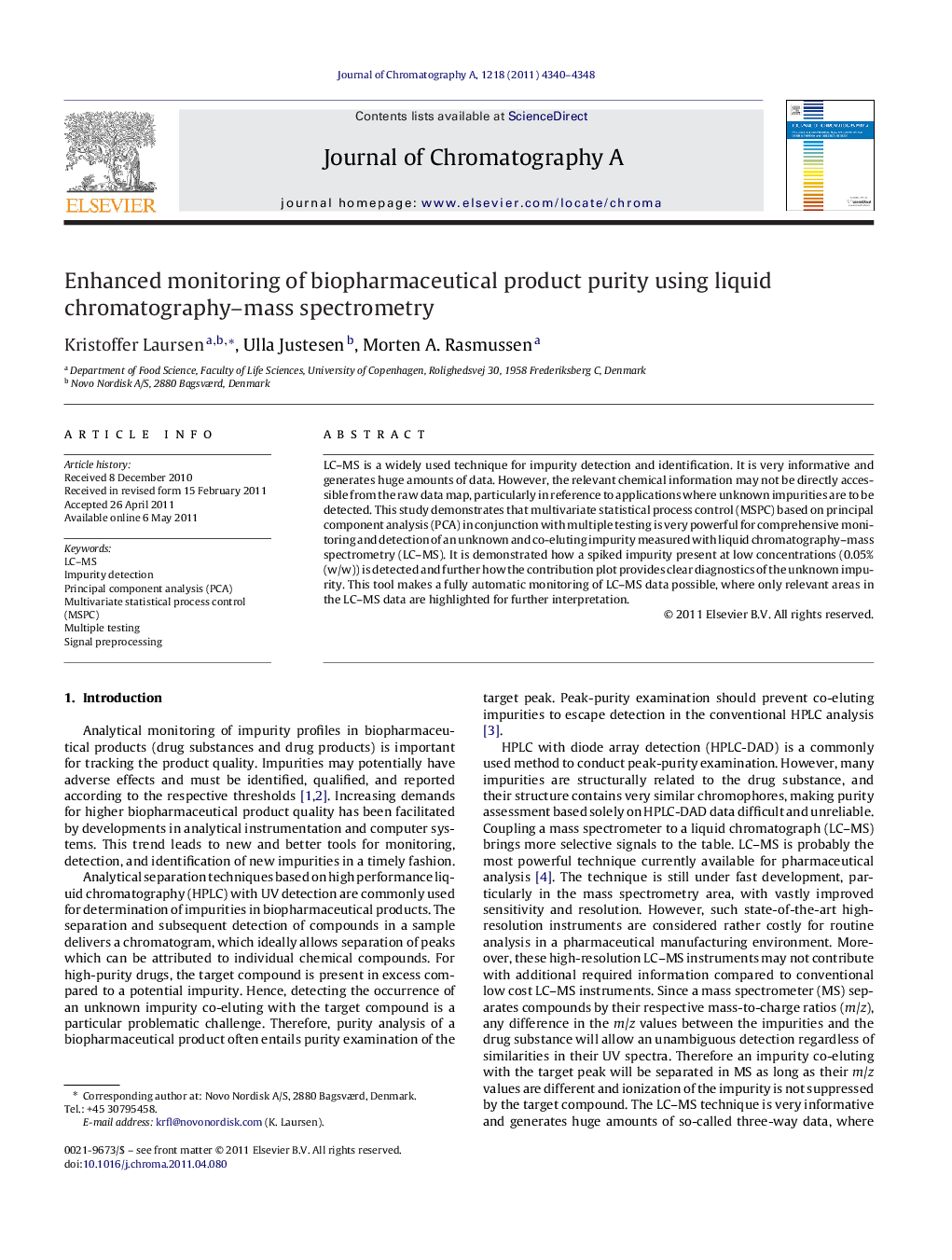| Article ID | Journal | Published Year | Pages | File Type |
|---|---|---|---|---|
| 1203635 | Journal of Chromatography A | 2011 | 9 Pages |
LC–MS is a widely used technique for impurity detection and identification. It is very informative and generates huge amounts of data. However, the relevant chemical information may not be directly accessible from the raw data map, particularly in reference to applications where unknown impurities are to be detected. This study demonstrates that multivariate statistical process control (MSPC) based on principal component analysis (PCA) in conjunction with multiple testing is very powerful for comprehensive monitoring and detection of an unknown and co-eluting impurity measured with liquid chromatography–mass spectrometry (LC–MS). It is demonstrated how a spiked impurity present at low concentrations (0.05% (w/w)) is detected and further how the contribution plot provides clear diagnostics of the unknown impurity. This tool makes a fully automatic monitoring of LC–MS data possible, where only relevant areas in the LC–MS data are highlighted for further interpretation.
